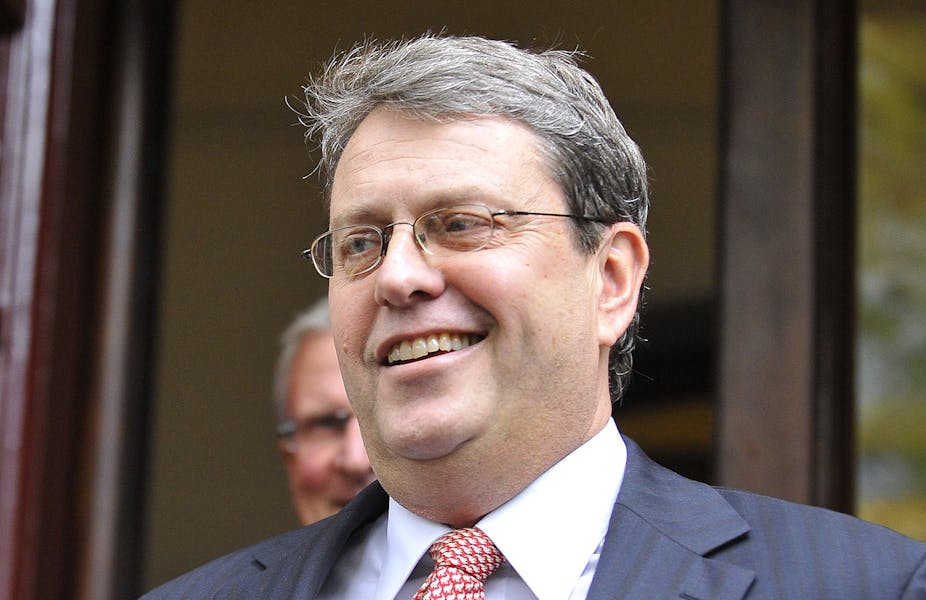From more than one perspective the New Daily, Australia’s latest online news provider, couldn’t have a better chance of survival.
With Bruce Guthrie (ex-Herald Sun and Age editor) as editor-in-chief, Daniel Sankey (ex-Age online editor) steering the news team and Crikey publisher Eric Beecher as advisor, it has a journalism startup A team.
The venture has been underwritten by three major super funds, AustralianSuper, United Super and Industry Super Holdings (formerly Members Equity Bank) and doesn’t have any immediate cash flow problems.
And it can call on significant financial expertise. Chairman of Super Industry Holdings Gary Weaven, AustralianSuper director Alison Terry and Media Super Chairman, Gerard Noonan are all listed as directors.
But the problem is that any newcomer to the crowded channels of the interwebs has to offer users an indisputably new, functional and compelling information proposition – and with the New Daily that’s harder to find.
Free for all

“The New Daily is Australia’s best source of news and information and is free for all users. Our team of top editors and journalists publishes throughout the day across desktop, social, mobile and tablet. You can rely on them for fair, balanced and unbiased coverage of major events around the world, across the nation and in your home state and city.”
Putting aside the usual hubris of it claiming to be an Australian best (and elsewhere a “trusted” source), this is a soft sell. There’s not much that’s distinctive about publishing generalist online news, particularly when part of traditional journalism’s downfall has been that people can now search for what they want, rather than reading what they’ve been given.
Alongside the Global Mail, Online Opinion, Independent Australia, New Matilda and the Guardian Australia and this publication, plus any number of expert blogs, there’s no shortage of well-informed nationally relevant editorial in this country, if not traditionally balanced and unbiased news.
Local news is the real deficit, and The New Daily does not address that gap.

Its news proposition is less compelling again when you recognise that much of the homepage is aggregated from the ABC, AAP and Getty Images, and so is already available at ABC Online. The site refers to itself as “highly curated”, which sounds more attractive than “highly aggregated”.
Nevertheless original reporting is always welcome in our otherwise concentrated news market and the likes of Sean Kelly, a former Rudd advisor, make for informed editorial.
As paywalls go up any reliable free journalism will always trump subscription. So neither Fairfax or News Limited could be happy about another competitor nibbling at the available advertising dollar.
Owl advice
As the Global Mail found after it launched, a good looking experimental design is not always what users want from their news source.
Launch day error messages aside, links still don’t always respond on the site and the loading icon spins for rather too long. Just-loaded pages have a disconcerting auto-topscroll movement and the side scroll navigation also took a while to get a handle on.
On the experimental side is the Owl Advisor icon, which triggers pop-up supplementary information boxes. Why the designers implemented this solution, given users’ historic aversion to pop-ups, is a mystery. Why they show these anonymous snippets instead of using the customary in-story links to identifiable sources is another.
It’s not about creating a walled garden to keep users on-site. One story showcasing Kevin Rudd memes links to video content from Network Ten, Taiwan’s Next Media Animation, and Sunrise, via Malcolm Farnsworth’s YouTube channel.
At the same time the lack of clear attribution to these companies is disconcerting, given the Daily’s claim to be a “best” source. As prominent US digital media advisor Steve Buttry notes, best practice aggregation - and good online journalism - is all about effective attribution and linking.
Even if it’s not working as well as it might just yet, the New Daily does have a clean, uncluttered and relatively contemporary tabloid look, and a prominently located social sharing menu.
They might think about including LinkedIn, Australia’s third largest social media platform. And along with the staff email addresses, how about staff biographies and Twitter handles?
So why is the super industry funding it?
The super industry is present on other media share registers. This venture however is a direct investment, owned and run by super people, and that sets it apart from other more passive investments.
Fairfax Media’s Madeleine Heffernan reports that the super industry’s decision to invest was commercial, rather than political, although there is some suggestion from AustralianSuper that The New Daily is also a “communications vehicle”.
It certainly sports a well-weighted money section, with a surprisingly strong line-up of superannuation and investment stories for a generalist publication.
Director Gary Weaven told Business Day that advertorial content will be clearly defined and financial reporting would not simply be “guff about self-managed super funds”. Yet the current fare seems mostly pro-industry with little in the way of strong criticism of policies or players.
And this may be the price we pay for free generalist news in an increasingly concentrated news market. The New Daily says it is supportive of new voices in a world of proliferating paywalls. Yet how much can a news site based on aggregated news content, primarily funded by the financial industry, contribute to that vision?

